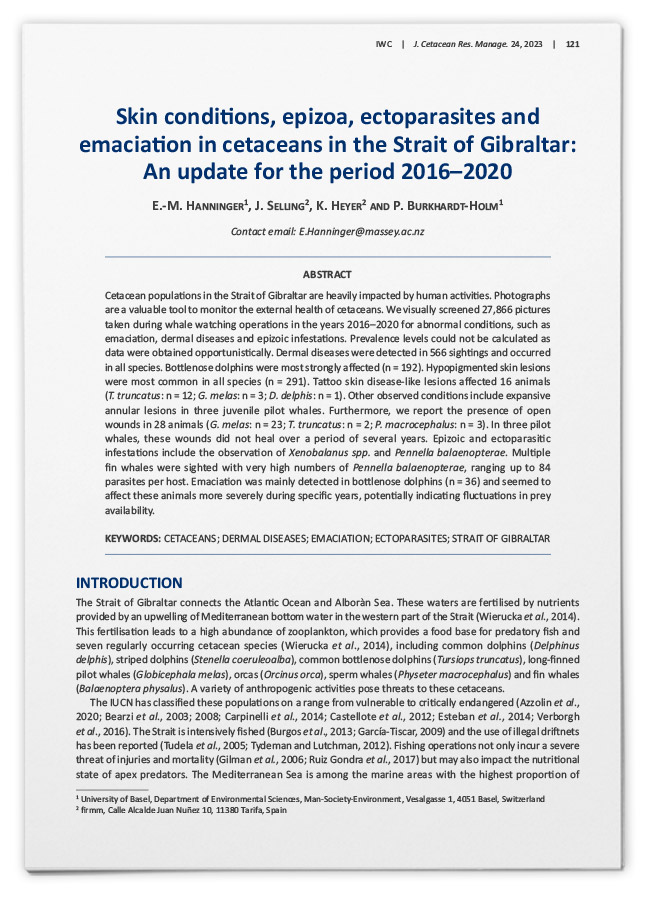Injuries in cetaceans in the Strait of Gibraltar: an update for the period 2016-2020
Wissenschaftliche Publikation von Jörn Selling und Katharina Heyer
Journal of Cetacean Research and Management 2023,Vol. 24 No. 1

Die Publikation ist zum Download freigegeben:
Eva-Maria Hanninger, Jörn Selling , Katharina Heyer, Patricia Burkhardt-Holm
Abstract:
The Strait of Gibraltar is an important habitat for seven regularly occurring cetacean species. These waters are heavily used for fishing and therefore experience extraordinary levels of shipping traffic. Photography provides a valuable and non‐invasive tool to monitor the health of cetacean populations, where external injuries may indicate specific anthropogenic impacts, such as vessel strikes or fishery interactions. We manually screened 27,866 photos taken during whale‐watching operations between 2016–20 for human‐induced injuries. Injuries of potential anthropogenic origin were detected in 228 cases. The severity of these injuries ranged from superficial linear marks to severe traumas that may affect survival and fitness. Severe injuries included a gunshot wound, vessel‐related traumata and abrasions, signs of previous severe entanglements and deep lacerations which could stem from recreational fishery activities or propellor cuts and occasionally served as an entry point for dermal infections. In 2007, Spanish legislation introduced regulations on how to approach cetaceans by boat, but recreational fishery vessels have been commonly observed to disregard this law. We therefore urge stricter control and enforcement of existing laws and collaboration between the Spanish and Moroccan authorities to mitigate the human impact on cetaceans in this region.

